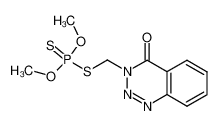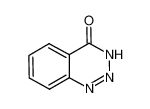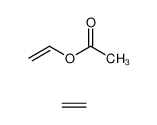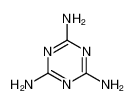| Product name | azinphos-methyl |
|---|
| Product number | - |
|---|---|
| Other names | O,O-dimethyl S-[(4-oxo-1,2,3-benzotriazin-3(4H)-yl)methyl] phosphorodithioate |
| Identified uses | For industry use only. Organophosphates and carbamates |
|---|---|
| Uses advised against | no data available |
| Company | MOLBASE (Shanghai) Biotechnology Co., Ltd. |
|---|---|
| Address | Floor 4 & 5, Building 12, No. 1001 North Qinzhou Road, Xuhui District, Shanghai, China |
| Telephone | +86(21)64956998 |
| Fax | +86(21)54365166 |
| Emergency phone number | +86-400-6021-666 |
|---|---|
| Service hours | Monday to Friday, 9am-5pm (Standard time zone: UTC/GMT +8 hours). |
Acute toxicity - Oral, Category 2
Acute toxicity - Dermal, Category 3
Skin sensitization, Category 1
Acute toxicity - Inhalation, Category 2
Hazardous to the aquatic environment, short-term (Acute) - Category Acute 1
Hazardous to the aquatic environment, long-term (Chronic) - Category Chronic 1
2.2 GHS label elements, including precautionary statements| Pictogram(s) | 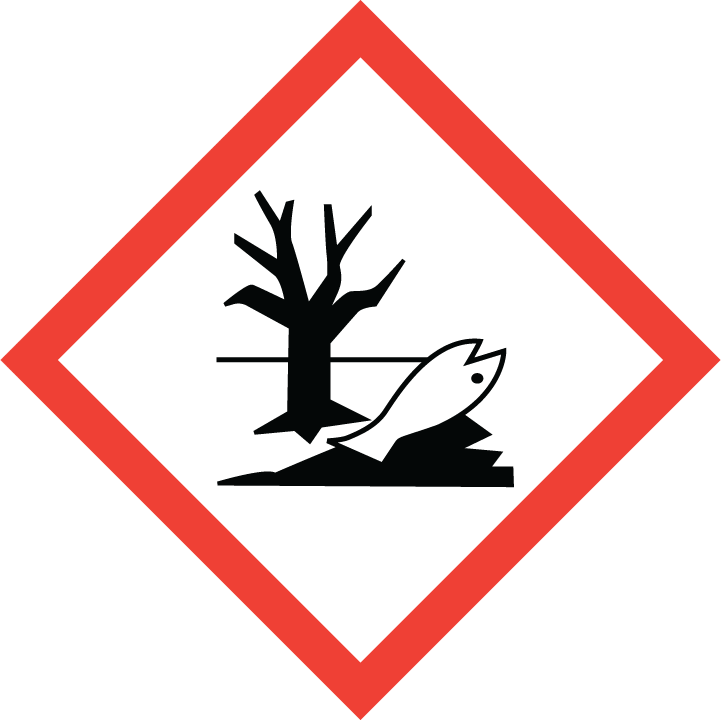 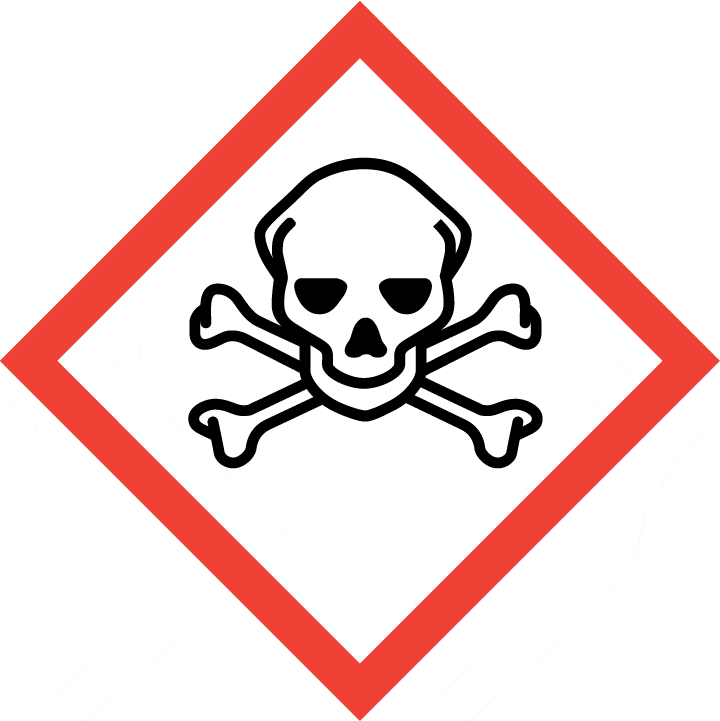 |
|---|---|
| Signal word | Danger |
| Hazard statement(s) | H300 Fatal if swallowed H311 Toxic in contact with skin H317 May cause an allergic skin reaction H330 Fatal if inhaled H410 Very toxic to aquatic life with long lasting effects |
| Precautionary statement(s) | |
| Prevention | P264 Wash ... thoroughly after handling. P270 Do not eat, drink or smoke when using this product. P280 Wear protective gloves/protective clothing/eye protection/face protection. P261 Avoid breathing dust/fume/gas/mist/vapours/spray. P272 Contaminated work clothing should not be allowed out of the workplace. P260 Do not breathe dust/fume/gas/mist/vapours/spray. P271 Use only outdoors or in a well-ventilated area. P284 [In case of inadequate ventilation] wear respiratory protection. P273 Avoid release to the environment. |
| Response | P301+P310 IF SWALLOWED: Immediately call a POISON CENTER/doctor/… P321 Specific treatment (see ... on this label). P330 Rinse mouth. P302+P352 IF ON SKIN: Wash with plenty of water/... P312 Call a POISON CENTER/doctor/…if you feel unwell. P361+P364 Take off immediately all contaminated clothing and wash it before reuse. P333+P313 If skin irritation or rash occurs: Get medical advice/attention. P362+P364 Take off contaminated clothing and wash it before reuse. P304+P340 IF INHALED: Remove person to fresh air and keep comfortable for breathing. P310 Immediately call a POISON CENTER/doctor/… P320 Specific treatment is urgent (see ... on this label). P391 Collect spillage. |
| Storage | P405 Store locked up. P403+P233 Store in a well-ventilated place. Keep container tightly closed. |
| Disposal | P501 Dispose of contents/container to ... |
none
3.Composition/information on ingredients 3.1 Substances| Chemical name | Common names and synonyms | CAS number | EC number | Concentration |
|---|---|---|---|---|
| azinphos-methyl | azinphos-methyl | 86-50-0 | none | 100% |
Consult a physician. Show this safety data sheet to the doctor in attendance.
If inhaledFresh air, rest. Artificial respiration may be needed. Refer for medical attention.
In case of skin contactRemove contaminated clothes. Rinse and then wash skin with water and soap. Refer for medical attention .
In case of eye contactFirst rinse with plenty of water for several minutes (remove contact lenses if easily possible), then refer for medical attention.
If swallowedInduce vomiting (ONLY IN CONSCIOUS PERSONS!). Refer for medical attention .
4.2 Most important symptoms/effects, acute and delayedAcute: extremely toxic. Probable oral lethal dose in humans is 5-50 mg/kg, or between 7 drops and 1 teaspoon for a 70 kg (150 lb.) person. A potent cholinesterase inhibitor which can cause death. (EPA, 1998)
4.3 Indication of immediate medical attention and special treatment needed, if necessaryA comatose patient who is diaphoretic, has pinpoint pupils and the odor of an insecticide on clothing or breath, and is noted to have muscle fasciculations represents the classic presentation of organophosphate poisoning. ... Specific steps in management include the following. 1. Decontamination. ... 2 Airway. Establish an airway if necessary. ... 3. Respiratory Status. Respiratory distress, in fact, is commonly found in these patients from multiple causes. ... 4. Cardiac Monitoring. ... 5. Cholinesterase Level. ... 6. Pralidoxime. Pralidoxime is the treatment of choice for organophosphate poisoning and should be used for nearly all patients with clinically significant orgnophosphate poisoning, particularly whose patients with muscular fasciculations and weakness. ... 7. Atropine. Atropine is the physiologic antidote for organophosphate poisoning. A trial dose of atropine should be instituted on clinical ground when one suspects organophosphate intoxication. /Organophosphate poisoning/
5.Fire-fighting measures 5.1 Extinguishing media Suitable extinguishing mediaSelf contained breathing apparatus with a full facepiece operated in pressure demand or other positive pressure mode /when fighting fire/.
5.2 Specific hazards arising from the chemicalSome of the formulations may burn, but none of them ignite easily. Container may explode in the heat of the fire. Rapidly hydrolyzed by cold alkali or cold acid. Unstable at temperatures above 390F. (EPA, 1998)
5.3 Special protective actions for fire-fightersWear self-contained breathing apparatus for firefighting if necessary.
6.Accidental release measures 6.1 Personal precautions, protective equipment and emergency proceduresUse personal protective equipment. Avoid dust formation. Avoid breathing vapours, mist or gas. Ensure adequate ventilation. Evacuate personnel to safe areas. Avoid breathing dust. For personal protection see section 8.
6.2 Environmental precautionsDo NOT wash away into sewer. Sweep spilled substance into covered sealable containers. If appropriate, moisten first to prevent dusting. Carefully collect remainder. Then store and dispose of according to local regulations. Personal protection: complete protective clothing including self-contained breathing apparatus.
6.3 Methods and materials for containment and cleaning upEnvironmental considerations: Air spill: Apply water spray or mist to knock down vapors. /Organophosphorus pesticides, liquid, flammable, toxic; Organophosphorus pesticides, liquid, toxic; Organophosphorus pesticides, solid, toxic/
7.Handling and storage 7.1 Precautions for safe handlingAvoid contact with skin and eyes. Avoid formation of dust and aerosols. Avoid exposure - obtain special instructions before use.Provide appropriate exhaust ventilation at places where dust is formed. For precautions see section 2.2.
7.2 Conditions for safe storage, including any incompatibilitiesSeparated from food and feedstuffs. Well closed.Store in a cool dry area, away from excessive heat or open flame. Store 2L formulation above 45 deg F; others above 32 deg F. Store in an area designated specifically for pesticides.
8.Exposure controls/personal protection 8.1 Control parameters Occupational Exposure limit valuesRecommended Exposure Limit: 10 Hour Time-Weighted Average: 0.2 mg/cu m. Skin.
Biological limit valuesno data available
8.2 Appropriate engineering controlsHandle in accordance with good industrial hygiene and safety practice. Wash hands before breaks and at the end of workday.
8.3 Individual protection measures, such as personal protective equipment (PPE) Eye/face protectionSafety glasses with side-shields conforming to EN166. Use equipment for eye protection tested and approved under appropriate government standards such as NIOSH (US) or EN 166(EU).
Skin protectionWear impervious clothing. The type of protective equipment must be selected according to the concentration and amount of the dangerous substance at the specific workplace. Handle with gloves. Gloves must be inspected prior to use. Use proper glove removal technique(without touching glove's outer surface) to avoid skin contact with this product. Dispose of contaminated gloves after use in accordance with applicable laws and good laboratory practices. Wash and dry hands. The selected protective gloves have to satisfy the specifications of EU Directive 89/686/EEC and the standard EN 374 derived from it.
Respiratory protectionWear dust mask when handling large quantities.
Thermal hazardsno data available
9.Physical and chemical properties| Physical state | COLOURLESS CRYSTALS |
|---|---|
| Colour | Yellowish crystals |
| Odour | Odorless |
| Melting point/ freezing point | 72-74ºC |
| Boiling point or initial boiling point and boiling range | 421.3ºC at 760 mmHg |
| Flammability | Noncombustible solidCombustible. Liquid formulations containing organic solvents may be flammable. Gives off irritating or toxic fumes (or gases) in a fire. |
| Lower and upper explosion limit / flammability limit | no data available |
| Flash point | 208.6ºC |
| Auto-ignition temperature | no data available |
| Decomposition temperature | no data available |
| pH | no data available |
| Kinematic viscosity | no data available |
| Solubility | less than 1 mg/mL at 18.89°C |
| Partition coefficient n-octanol/water (log value) | log Kow = 2.75 |
| Vapour pressure | Negligible at 20C (EPA, 1998) |
| Density and/or relative density | 1.51g/cm3 |
| Relative vapour density | no data available |
| Particle characteristics | no data available |
no data available
10.2 Chemical stabilitySolutions in ethanol and propylene glycol are stable for at least 3 weeks.
10.3 Possibility of hazardous reactionsThe BPS Pesticide incident in Helena resulted in an explosion and death of three firemen. The burning of a 1,000 pound sack of Azinphos Methyl or the flashing of Maneb which was present on the facility may have caused the explosion. Azinphos Ethyl may behave similarly. At elevated temperatures, it will decompose generating toxic gases.
10.4 Conditions to avoidno data available
10.5 Incompatible materialsIncompatibilities: Contact with strong oxidizers may cause fires and explosions.
10.6 Hazardous decomposition products... Decomposes at elevated temperatures.
11.Toxicological information Acute toxicity- Oral: LD50 Guinea pig male oral 80 mg/kg
- Inhalation: LC50 Rat inhalation 0.15 mg/L air/4 hr
- Dermal: LD50 Rat percutaneous 150-200 mg/kg/24 hr
no data available
Serious eye damage/irritationno data available
Respiratory or skin sensitizationno data available
Germ cell mutagenicityno data available
CarcinogenicityCancer Classification: Not Likely to be Carcinogenic to Humans
Reproductive toxicityno data available
STOT-single exposureno data available
STOT-repeated exposureno data available
Aspiration hazardno data available
12.Ecological information 12.1 Toxicity- Toxicity to fish: LC50; Species: Ictalurus melas (Black bullhead) weight 1.2 g; Conditions: static without aeration, 18°C, pH 7.2-7.5, alkalinity 30-35 mg/L, hardness 40-50 mgL as CaCO3; Concentration: 3,500 ug/L for 96 hr (95% confidence interval: 2,920-4,950 ug/L) /Technical material, 88-100%
- Toxicity to daphnia and other aquatic invertebrates: EC50; Species: Daphnia magna (Water Flea) 1st instar larvae; Conditions: freshwater, flow through; Concentration: 4.4 ug/L for 48 hr (95% confidence interval: 3.9-5.8 ug/L); Effect: intoxication, immobilization /50% purity wettable powder formulation
- Toxicity to algae: no data available
- Toxicity to microorganisms: no data available
AEROBIC: Azinphosmethyl was degraded in batch and continuous culture by mixed enrichment cultures of microorganisms that were collected from soil, raw sewage, a trickling filter, activated sludge, and settled sludge(1). Azinphosmethyl concentration decreased from 99 mg/L to 49 mg/L after 4 days incubation in a stirred flask containing azinphosmethyl as the sole carbon source and a mixed culture(1). The main degradation products of azinphosmethyl in soil and by selected soil microorganisms are benzazimide, thiomethylbenzazimide, bis-(benzazimidyl-methyl) disulfide, and anthranilic acid(2). Using analytical grade and diluted emulsifiable concentrated azinphosmethyl, at a concentration of 15 ppm, incubated at 30°C in Carrington silt loam degradation was 95% in 6 and 22 days, respectively(3). After 10 weeks, no residual azinphosmethyl was detected(3). The half-life of azinphosmethyl in seawater (pH 8.1) was 26 days when incubated in the absence of light, while the half-life in river water (pH 7.3) was 42 days, 35 days (pH 7.3) in filtered river water when incubated in closed 2.5 Liter amber bottles at 22°C(4).
12.3 Bioaccumulative potentialAn estimated BCF of 30 was calculated in fish for azinphosmethyl(SRC), using a log Kow of 2.75(1) and a regression-derived equation(2). According to a classification scheme(3), this BCF suggests the potential for bioconcentration in aquatic organisms is moderate(SRC).
12.4 Mobility in soilThe Koc of azinphosmethyl in five European soils was measured in the range of 487 to 4,644(1). Azinphosmethyl also had Koc values of 1990 (75.0% clay, 3.29% organic carbon), 783 (22.6% clay, 2.39% organic carbon), 570 (17.0% clay, 3.32% organic carbon), 630 (20.3% clay, 1.36% organic carbon) and 1700 (6.0% clay, 4.43% organic carbon) in five European soils(2). Using data from the 1993 UK database, Koc values for azinphosmethyl were 298 to 3406(3). According to a classification scheme(4), this Koc data suggests that azinphosmethyl is expected to have moderate to slight mobility in soil. Measurable residues were found in sediment samples after application to the surface of littoral enclosure mesocosms; the sediment and water were identified as the most important sorptive compartments(5). The compound is not likely to leach to groundwater except in areas of high recharge such as karst(6).
12.5 Other adverse effectsno data available
13.Disposal considerations 13.1 Disposal methods ProductThe material can be disposed of by removal to a licensed chemical destruction plant or by controlled incineration with flue gas scrubbing. Do not contaminate water, foodstuffs, feed or seed by storage or disposal. Do not discharge to sewer systems.
Contaminated packagingContainers can be triply rinsed (or equivalent) and offered for recycling or reconditioning. Alternatively, the packaging can be punctured to make it unusable for other purposes and then be disposed of in a sanitary landfill. Controlled incineration with flue gas scrubbing is possible for combustible packaging materials.
14.Transport information 14.1 UN Number| ADR/RID: UN2783 | IMDG: UN2783 | IATA: UN2783 |
| ADR/RID: ORGANOPHOSPHORUS PESTICIDE, SOLID, TOXIC |
| IMDG: ORGANOPHOSPHORUS PESTICIDE, SOLID, TOXIC |
| IATA: ORGANOPHOSPHORUS PESTICIDE, SOLID, TOXIC |
| ADR/RID: 6.1(a) | IMDG: 6.1(a) | IATA: 6.1(a) |
| ADR/RID: II | IMDG: II | IATA: II |
| ADR/RID: yes | IMDG: yes | IATA: yes |
no data available
14.7 Transport in bulk according to Annex II of MARPOL 73/78 and the IBC Codeno data available
15.Regulatory information 15.1 Safety, health and environmental regulations specific for the product in question| Chemical name | Common names and synonyms | CAS number | EC number |
|---|---|---|---|
| azinphos-methyl | azinphos-methyl | 86-50-0 | none |
| European Inventory of Existing Commercial Chemical Substances (EINECS) | Listed. | ||
| EC Inventory | Listed. | ||
| United States Toxic Substances Control Act (TSCA) Inventory | Not Listed. | ||
| China Catalog of Hazardous chemicals 2015 | Listed. | ||
| New Zealand Inventory of Chemicals (NZIoC) | Listed. | ||
| Philippines Inventory of Chemicals and Chemical Substances (PICCS) | Listed. | ||
| Vietnam National Chemical Inventory | Not Listed. | ||
| Chinese Chemical Inventory of Existing Chemical Substances (China IECSC) | Not Listed. | ||
| Creation Date | Aug 12, 2017 |
|---|---|
| Revision Date | Aug 12, 2017 |
- CAS: Chemical Abstracts Service
- ADR: European Agreement concerning the International Carriage of Dangerous Goods by Road
- RID: Regulation concerning the International Carriage of Dangerous Goods by Rail
- IMDG: International Maritime Dangerous Goods
- IATA: International Air Transportation Association
- TWA: Time Weighted Average
- STEL: Short term exposure limit
- LC50: Lethal Concentration 50%
- LD50: Lethal Dose 50%
- EC50: Effective Concentration 50%
- IPCS - The International Chemical Safety Cards (ICSC), website: http://www.ilo.org/dyn/icsc/showcard.home
- HSDB - Hazardous Substances Data Bank, website: https://toxnet.nlm.nih.gov/newtoxnet/hsdb.htm
- IARC - International Agency for Research on Cancer, website: http://www.iarc.fr/
- eChemPortal - The Global Portal to Information on Chemical Substances by OECD, website: http://www.echemportal.org/echemportal/index?pageID=0&request_locale=en
- CAMEO Chemicals, website: http://cameochemicals.noaa.gov/search/simple
- ChemIDplus, website: http://chem.sis.nlm.nih.gov/chemidplus/chemidlite.jsp
- ERG - Emergency Response Guidebook by U.S. Department of Transportation, website: http://www.phmsa.dot.gov/hazmat/library/erg
- Germany GESTIS-database on hazard substance, website: http://www.dguv.de/ifa/gestis/gestis-stoffdatenbank/index-2.jsp
- ECHA - European Chemicals Agency, website: https://echa.europa.eu/





